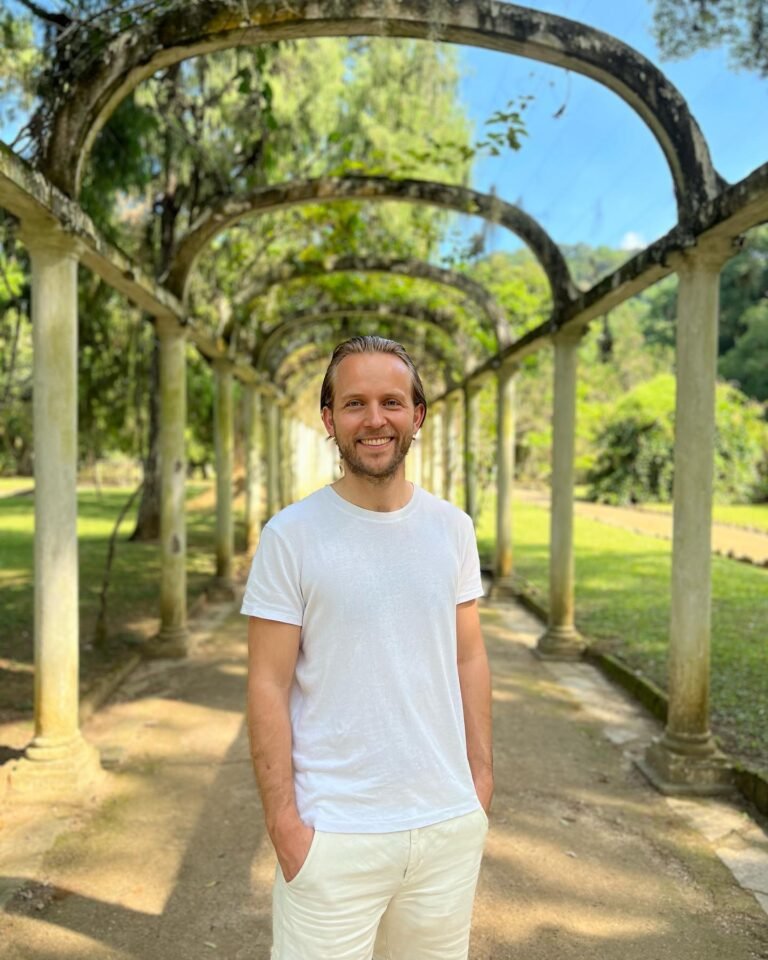Why the F‑1 Visa Is the Ultimate Gateway in Your 20s
When I first researched study‑abroad options in my early 20s, I wanted more than just a degree — I craved cross‑cultural experiences, campus life, and networking with peers from around the globe. The F‑1 visa lets you enroll full‑time in a degree program at accredited U.S. schools while tapping into on‑campus jobs, clubs, and internships.
An F‑1 visa doesn’t lock you into a single path. After completing your program, you can apply for up to 12 months of OPT to work in your field—sometimes extended by 24 months for STEM majors—before deciding on graduate studies, employer sponsorship (H‑1B), or returning home.
In your 20s, you’re exploring career paths and personal growth. Studying in the U.S. under the F‑1 visa offers a structured environment with academic support, while also giving you space to travel during breaks and build an international résumé early on.
Understanding the F‑1 Visa and Eligibility
What Is the F‑1 Visa?
The F‑1 visa is a nonimmigrant classification for students attending academic programs or language training in the U.S. It’s sponsored through SEVIS‑certified schools, which issue the Form I‑20—a certificate you need to apply for your visa.
Key Eligibility Criteria
- School Acceptance: You must be admitted to a SEVP‑certified institution and receive your Form I‑20 from a Designated School Official (DSO).
- Financial Proof: You need to demonstrate sufficient funds to cover tuition and living expenses for at least your first year; this can include scholarships, grants, or personal funds (at least 51% from non‑personal sources for some programs).
- English Proficiency: You’ll generally need TOEFL, IELTS, or equivalent scores to show you can succeed academically in English.
Finding the Right University and Program
Leverage EducationUSA Advising
EducationUSA operates 430+ advising centers worldwide offering free, up‑to‑date guidance on U.S. higher education. I booked virtual sessions with advisers who helped me tailor my college list based on my interests and budget.
Research Tools and Platforms
- Study in the States: The Department of Homeland Security portal lists SEVP‑certified schools and offers student‑focused resources.
- TopUniversities.com: Offers data on costs and rankings to compare public vs. private, in‑state vs. out‑of‑state tuition averages ($17,930–$41,950/year).
- Interstride & Shorelight: Personality quizzes and interview prep guides tailored for international students.
Narrowing Your List
When I shortlisted schools, I weighed curriculum fit, campus culture, career services, and proximity to major cities. Virtual campus tours and online student forums were invaluable in gauging student life vibes.
Step‑by‑Step Application Guide
1. Secure Admission and Form I‑20
Apply to your chosen schools, submit transcripts, test scores, essays, and recommendations. Upon acceptance, the DSO issues your Form I‑20, which you’ll need for visa processing.
2. Pay the SEVIS I‑901 Fee
Use the SEVIS ID on your I‑20 to pay the $220 SEVIS I‑901 fee at FMJfee.com. Keep your payment confirmation for the visa interview.
3. Complete the DS‑160 Application
Fill out the DS‑160 online nonimmigrant visa form (about 90 minutes) at CEAC.state.gov, upload your photo, and print the confirmation page—critical for your embassy appointment.
4. Schedule and Prepare for the Interview
Book your consular interview 2–3 months before your program start date. Dress professionally, bring your I‑20, DS‑160 confirmation, SEVIS receipt, passport, financial documents, and admission letter. Practice answering why you chose your program and how you’ll fund your studies.
5. Attend the Interview and Receive Your Visa
Be punctual. Consular officers typically ask about your academic plans, ties to your home country, and funding. Clear, concise answers based on your genuine goals will boost approval chances.
Financing Your U.S. Education
Budgeting for Tuition and Living
Annual tuition varies widely—community colleges start around $17,930, while private universities can exceed $40,000 Top Universities. Factor in $10,000–$15,000 for housing, food, books, and insurance.
Funding Sources
- Scholarships & Grants: Search EducationUSA’s scholarship database and university‑specific awards. Many schools offer merit-based aid to top international applicants NAFSA.
- Home‑Country Support: Government scholarships or employer sponsorships may cover up to 49% of your costs NAFSA.
- On‑Campus Employment: F‑1 students can work up to 20 hours/week on campus during semesters and full‑time in breaks—great for pocket money international.indianapolis.iu.edu.
Money‑Saving Strategies
I saved $3,000 annually by sharing off‑campus housing, cooking at home, and using student transit passes. Look for used textbooks and digital rentals to cut book costs.
Pre‑Departure and Arrival
Health Insurance and Housing
F‑1 status requires health coverage—compare plans via your school or EducationUSA EducationUSA. Secure temporary on‑campus housing first, then hunt for longer‑term rentals through university portals or Facebook groups.
Cultural Preparation
Learn U.S. classroom etiquette, tipping norms, and social customs. I joined international student forums on Reddit and Facebook weeks before departure to ask real‑time questions.
Life as an F‑1 Student
Academic Expectations
Maintain full‑time enrollment (12 credits/semester undergrads, 9 for grads) and meet GPA requirements. Office hours and study groups helped me adapt to interactive U.S. teaching styles studyinthestates.dhs.gov.
Campus and Community
Get involved: student clubs, cultural associations, and volunteer projects enrich your experience. My first month, I joined a coding club and an intramural soccer team—instant friends!
Travel and Exploration
You can travel freely during school breaks; I took a budget bus to Washington, D.C., during fall break. Domestic travel broadens your U.S. perspective and makes your study‑abroad story even richer.
Example Applicant’s Timeline
Below is a month‑by‑month roadmap illustrating a typical F‑1 visa applicant’s journey, based on my own experience:
- T – 9 Months (January): Research Programs & Budget
I began by listing 10 U.S. schools that matched my academic goals and estimated costs using Study in the States’ SEVP‑certified school search and TopUniversities.com data Rejse studyinthestates.dhs.gov. - T – 6 Months (April): Submit Applications
By April, I had sent transcripts, test scores, essays, and recommendations to my top five choices; DSOs started issuing Form I‑20s within 4–6 weeks studyinthestates.dhs.gov. - T – 5 Months (May): Pay SEVIS I‑901 Fee
I paid the $220 SEVIS I‑901 fee online as soon as I received my I‑20’s SEVIS ID, printing the confirmation for my consular appointment studyinthestates.dhs.gov. - T – 4 Months (June): Complete DS‑160 & Schedule Interview
I filled out the DS‑160 on CEAC.state.gov (about 90 minutes) and booked my visa interview at the U.S. Embassy for early July studyinthestates.dhs.gov. - T – 3 Months (July): Visa Interview
At my July interview, I presented my I‑20, DS‑160 confirmation, SEVIS receipt, bank statements, and admission letter—approval came the same day Rejse. - T – 1 Month (August): Pre‑Departure & Orientation
I secured temporary on‑campus housing, purchased health insurance, and packed essential documents and clothing for all seasons studyinthestates.dhs.gov. - T + 0 (September): Arrival & Check‑In
I landed on campus 20 days before classes, checked in with my DSO, and attended orientation week to set up my student ID, bank account, and mobile plan studyinthestates.dhs.gov. - T + 6 Months (March): Mid‑Semester Review
Six months in, I met with my academic adviser, joined new clubs, and applied for on‑campus work as permitted under F‑1 regulations USCIS.
Mistakes to Avoid
- Late SEVIS I‑901 Payment
Paying the SEVIS fee after your DS‑160 submission can delay your interview scheduling—always pay within days of receiving your I‑20 studyinthestates.dhs.gov. - Incomplete DS‑160 Form
Omitting details or uploading an invalid photo often triggers re‑submission requests and interview delays studyinthestates.dhs.gov. - Weak Financial Documentation
Presenting vague bank statements or insufficient funding can lead to a refusal under INA §214(b) for lack of financial proof studyinthestates.dhs.gov. - Unpracticed Interview Responses
Fumbling through questions about your study plan and home‑country ties increases uncertainty—rehearse concise answers in advance Rejse. - Missing DSO Arrival Deadline
F‑1 students must report to their DSO no later than 30 days after program start or face SEVIS termination USCIS.
Frequently Asked Questions (FAQ)
Can I Work Off‑Campus in My First Semester?
No—F‑1 regulations prohibit off‑campus employment during your first academic year, though you may work on campus up to 20 hours/week USCIS.
What If My DS‑160 Is Rejected?
You must correct any errors, pay a new fee, and submit a fresh DS‑160—keep copies of all receipts for your records studyinthestates.dhs.gov.
How Soon Can I Travel Abroad After Arrival?
You may travel outside the U.S. 30 days before your program start date and re‑enter with your valid I‑20 endorsed for travel USCIS.
Can I Change Schools on an F‑1 Visa?
Yes—file a SEVIS transfer request with your current DSO and new school’s DSO, ideally before your next session begins studyinthestates.dhs.gov.
Packing & Pre‑Departure Checklist
- Essential Documents: Original Form I‑20, visa stamp, passport (valid ≥ 6 months), DS‑160 confirmation, SEVIS fee receipt, acceptance letter, bank statements, prescriptions studyinthestates.dhs.gov.
- Electronics & Accessories: Laptop, phone, power adapters (Type A/B), portable charger, headphones.
- Clothing & Bedding: Layers for varied U.S. climates, a warm coat, bedding basics (pillowcase, sheets).
- Kitchen Basics (If Off‑Campus): One pot, pan, utensils, a compact coffee maker or electric kettle.
- Nice‑to‑Have Items: Small gifts from home, reusable water bottle, local snacks to share with new friends.
Immersing Yourself: Campus & Community Tips
- Join Student Organizations: Attend your university’s involvement fair and sign up for cultural, academic, or hobby clubs—instant networking and support NAFSA.
- Volunteer Locally: Campus and community service projects (e.g., food pantries, literacy programs) offer cultural immersion and résumé‑boosting experiences NAFSA.
- Use Career & Alumni Resources: Schedule meetings with career‑center advisers and join your school’s alumni network for mentorship and internship leads.
- Attend Local Events: Follow campus calendars and Meetup.com groups for lectures, concerts, and festivals to explore U.S. culture beyond academics.
- Balance Academics & Social Life: Time‑block your week—allocate hours for classes, study groups, club meetings, and “down time” to avoid burnout.
Comparing Visa Options: F‑1 vs. J‑1 vs. M‑1
| Feature | F‑1 (Academic) | J‑1 (Exchange) | M‑1 (Vocational) |
|---|---|---|---|
| Purpose | Degree‑seeking academic programs | Cultural & educational exchange, including study, research, teaching | Non‑academic vocational training |
| Work Rights | On‑campus; CPT/OPT post‑completion | Limited (academic training or program‑specific work) | No off‑campus work; on‑campus only |
| Duration | Program length + 60 day grace period | Program length + 30 day grace period | Length of training + 30 day grace period |
| Change of Status | Can convert to H‑1B, etc. | Two‑year home‑residency requirement may apply; then can change | Can apply for H‑1B after completion |
| Dual Intent | Not officially allowed, but tolerated for OPT | Not allowed; 212(e) residency requirement for some categories | Not allowed |
Sources: F‑1 & M‑1 details studyinthestates.dhs.gov; J‑1 overview studyinthestates.dhs.gov.
Long‑Term Pathways & Alternatives
- Optional Practical Training (OPT): After your degree, apply for up to 12 months (or 36 months STEM extension) of work authorization in your field USCIS.
- H‑1B Specialty Occupation: Employers can sponsor you; the H‑1B cap‑gap rule can extend your F‑1 status while awaiting H‑1B approval USCIS USCIS.
- Green Card Routes: Consider EB‑2 National Interest Waiver or employer‑sponsored EB‑3 categories after gaining U.S. experience.
- Alternative Student Visas: If you prefer shorter language or vocational programs, explore J‑1 exchange or M‑1 vocational visas—each has unique benefits and limitations studyinthestates.dhs.gov studyinthestates.dhs.gov.
Next Steps: OPT and Beyond
Optional Practical Training (OPT)
After completing your degree, apply for up to 12 months of OPT in your field, or 36 months if you qualify for the STEM extension USCIS. This real‑world experience is invaluable for your résumé.
Visa Transitions
If you wish to stay longer, your employer can file an H‑1B petition, or you can transition to a dependent visa if your partner’s status changes. Your DSO and campus international office are your best resources for guidance.
Resources and Inspiration
- Travel.State.Gov Student Visas: Official F‑1 overview and FAQs Rejse.
- Study in the States: SEVIS, I‑20, and status‑maintenance guidance studyinthestates.dhs.gov.
- EducationUSA: Free advising and scholarship info EducationUSA.
- NAFSA Financial Aid: Tips on funding your U.S. education NAFSA.
- Shorelight Interview Prep: Common F‑1 visa questions and model answers Shorelight.
- TopUniversities Cost Guide: Breakdown of tuition by institution type Top Universities.
- ICE I‑901 FAQs: Detailed SEVIS fee rules and exceptions ice.gov.
Embarking on your F‑1 journey in your 20s is a transformative step—academic rigor, cultural immersion, and professional pathways await. Start by reaching out to an EducationUSA adviser, compiling your school list, and securing that all‑important I‑20. Before you know it, you’ll be landing stateside, ready to write the next chapter of your life in the U.S. Good luck—and welcome to your study‑abroad adventure!







